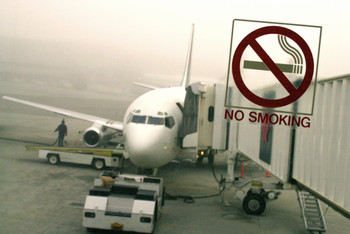
| HOME | ACTIVISTS | ARTICLES | RESOURCES | DIRECTORY | SITE MAP |
|
Air Support for Patton's Third Army AIR SUPPORT FOR PATTON'S THIRD ARMY, John J. Sullivan, McFarland and Co., Jefferson, NC, 2003, 186 pages, $42.50. In Air Support for Patton's Third Army, John J. Sullivan seeks to complete the record on the Third Army. He argues that while the Third Army's success is celebrated, it is generally celebrated incompletely. No one "paid much attention to a crucial reason for the Third Army's victories--the air support given to it by the U.S. Army Air Forces, especially the Ninth Air Force." While Sullivan corrects the record, he focuses, rightly, on how the Ninth Air Force and the XIX Tactical Air Command, in particular, provided that support.
Sullivan effectively describes the critical issues from command and control of air operations, to the logistics of building tactical airfields, to keeping pace with ground operations. He examines doctrine, techniques, and tactics tactical air forces used to ensure the success of ground operations. Sullivan achieves all this with integrity. He is interested in telling the story, not in developing or sustaining a particular thesis beyond, as he points out in his preface, completing the record. He succeeds admirably. Sullivan is also successful in describing the give and take that occurred in the Allied High Command. Lieutenant General Carl Spaatz, who preferred strategic bombing to close air support, bitterly resented the air operations command and control structure that placed the Ninth Air Force in the Allied chain of command. Technically, the Ninth Air Force reported to Air Chief Marshal Trafford Leigh Mallory; however, the chain of command was far more complicated. Mallory, who had an unattractive personality, fended off assaults on his control from Supreme Headquarters Allied Expeditionary Force (SHAEF) and the Americans. The SHAEF staff preferred Air Chief Marshal Arthur Tedder to Mallory. The Americans, Spaatz in particular, wanted to retain control of all air operations within a national chain of command. General Dwight D. Eisenhower, the consummate coalition commander, somehow kept the peace. In the end, despite personal differences, leaders produced decisive results because of the quality of their leadership skills. Led brilliantly by Lieutenant General Hoyt Vanderberg, the Ninth Air Force excelled despite bickering at the top tier. Vanderberg was supported by an able cast of subordinates, including Major General Pete Quesada at IX Tactical Air Command and Brigadier General Otto Weyland, whose XIX Tactical Air Command generally supported the Third Army. The Ninth Air Force also included IX Troop Carrier Command and IX Bomber Command and three supporting commands, including the large, capable IX Engineer Command. Ninth Air Force could support airborne operations, tactical bombing, and close air support, build bases, support aircraft maintenance and refueling, and defend the bases they built or occupied. Close air support is not something the World War II air force embraced with enthusiasm. Sullivan makes it clear that the Army Air Forces had a preference for strategic bombing, which is not surprising. But, under the prodding of General Henry "Hap" Arnold and because of outstanding leadership in the Ninth Air Force, Arnold's troops developed procedures and tactics that enabled them to play a central role in achieving success in the field. The Ninth Air Force provided aerial resupply, troop transport, interdiction, and close support. General George S. Patton's confidence in the Ninth Air Force was so high he relied on supporting airmen to secure his southern flank as the Third Army raced east in the summer of 1944. The troops on the ground trusted and depended on their colleagues in the air. Sullivan makes it clear the ground troops' trust in the Ninth stemmed from experience and the willingness of airmen and ground troops to find solutions to daunting problems and to go beyond the service's culture. Sullivan delivers a concise, compelling narrative of that effort. |
Copyright 2025 Cargofs.com All rights reserved.
|
 Sullivan's narrative has a nearly first-person quality because of his experience as a tactical air controller who served with the Marines in World War II and with the Army's 2d Infantry Division during the Korean war. "Nearly" is the right word, for Sullivan stays safely out of the narrative. Seeking to learn for himself how the air-ground team came together between the Ninth Air Force and the Third Army, he illuminates the process for the rest of us.
Sullivan's narrative has a nearly first-person quality because of his experience as a tactical air controller who served with the Marines in World War II and with the Army's 2d Infantry Division during the Korean war. "Nearly" is the right word, for Sullivan stays safely out of the narrative. Seeking to learn for himself how the air-ground team came together between the Ninth Air Force and the Third Army, he illuminates the process for the rest of us.